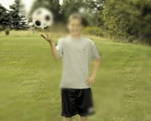Regular sight tests are essential for maintaining healthy eyes but there are other things you can do to look after your eyes…
Diet
Studies show that what we eat can affect our vision. Antioxidants can help to prevent retinal damage. One anti-oxidant which is hugely beneficial is lutein.
Foods recommended for eye health include:
•Broad leaf greens such as kale and spinach
•Brightly coloured fruit and vegetables such as corn, carrots, orange sweet peppers and oranges
•Oily fish like salmon, tuna and mackerel
•Broccoli
•Eggs
•Exercise and daylight
Lack of exercise contributes significantly to several eye conditions, particularly amongst people aged 60 and over. Exercise may reduce the risk of sight loss from narrowing or hardening of the arteries, high blood pressure and diabetes.
Alcohol
Excessive alcohol consumption can lead to serious health conditions which can have a detrimental effect on your eye health.
Smoking
After ageing, smoking is the biggest risk factor for developing macular degeneration.
Smoking also increases your risk of developing cataract
The sun
Protecting your eyes from the sun is very important and should not be underestimated. Under no circumstances should you ever look at the sun directly. Your sunglasses should have the CE mark on them which ensures that they are giving you the right level of ultraviolet protection
CATARACTS
 A cataract is a clouding that develops in the crystalline lens of the eye or in its envelope, varying in degree from slight to complete opacity and obstructing the passage of light. Early in the development of age-related cataract the power of the lens may be increased, causing near-sightedness (myopia), and the gradual yellowing and opacification of the lens may reduce the perception of blue colours. Cataracts typically progress slowly to cause vision loss and are potentially blinding if untreated. The condition usually affects both the eyes, but almost always one eye is affected earlier than the other.
A cataract is a clouding that develops in the crystalline lens of the eye or in its envelope, varying in degree from slight to complete opacity and obstructing the passage of light. Early in the development of age-related cataract the power of the lens may be increased, causing near-sightedness (myopia), and the gradual yellowing and opacification of the lens may reduce the perception of blue colours. Cataracts typically progress slowly to cause vision loss and are potentially blinding if untreated. The condition usually affects both the eyes, but almost always one eye is affected earlier than the other.
DIABETIC RETINOPATHY
 Diabetic retinopathy is retinopathy (damage to the retina) caused by complications of diabetes mellitus, which can eventually lead to blindness. It is an ocular manifestation of systemic disease which affects up to 80% of all patients who have had diabetes for 10 years or more. Research indicates that at least 90% of these new cases could be reduced if there was proper and vigilant treatment and monitoring of the eyes
Diabetic retinopathy is retinopathy (damage to the retina) caused by complications of diabetes mellitus, which can eventually lead to blindness. It is an ocular manifestation of systemic disease which affects up to 80% of all patients who have had diabetes for 10 years or more. Research indicates that at least 90% of these new cases could be reduced if there was proper and vigilant treatment and monitoring of the eyes
GLAUCOMA
 Glaucoma refers to a group of diseases that affect the optic nerve and involves a loss of retinal ganglion cells in a characteristic pattern. It is a type of optic neuropathy. Raised intraocular pressure is a significant risk factor for developing glaucoma. One person may develop nerve damage at a relatively low pressure, while another person may have high eye pressure for years and yet never develop damage. Untreated glaucoma leads to permanent damage of the optic nerve and resultant visual field loss, which can progress to blindness
Glaucoma refers to a group of diseases that affect the optic nerve and involves a loss of retinal ganglion cells in a characteristic pattern. It is a type of optic neuropathy. Raised intraocular pressure is a significant risk factor for developing glaucoma. One person may develop nerve damage at a relatively low pressure, while another person may have high eye pressure for years and yet never develop damage. Untreated glaucoma leads to permanent damage of the optic nerve and resultant visual field loss, which can progress to blindness
MACULA DEGENERATION
 Macular degeneration is a medical condition usually of older adults that results in a loss of vision in the center of the visual field (the macula) because of damage to the retina. It occurs in “dry” and “wet” forms and is a major cause of visual impairment in the elderly. Macular degeneration can make it difficult or impossible to read or recognize faces, although enough peripheral vision remains to allow other activities of daily life
Macular degeneration is a medical condition usually of older adults that results in a loss of vision in the center of the visual field (the macula) because of damage to the retina. It occurs in “dry” and “wet” forms and is a major cause of visual impairment in the elderly. Macular degeneration can make it difficult or impossible to read or recognize faces, although enough peripheral vision remains to allow other activities of daily life
Astigmatism
This is an irregular curvature of the front surface of the eye. The best analogy is where the curves are shaped more like a rugby ball than a football.
Dispensing optician
Dispensing opticians are qualified to examine optometrist’s prescriptions to determine lens specifications. They recommend frames, lens types and coatings after considering the prescription and the customer’s occupation, habits, and facial features.
Long sightedness (hypermetropia)
Difficulty focusing on close objects eg. reading. Here the eyeball is too short to focus images on the back of the eye.
Optometrist
Previously known as Ophthalmic Optician, this term was adopted in the UK to conform to the international standard.
Presbyopia (‘ageing eye’)
This is part of growing older, and usually occurs in the late forties. Whilst distance vision can remain good there is an inability in the eye’s optical system to focus on near objects, requiring us to need reading glasses.
Short sightedness (myopia)
The inability to see clearly at longer distances, for example when driving. This is usually caused by the eyeball being too long to focus images clearly on the back of the eye.
